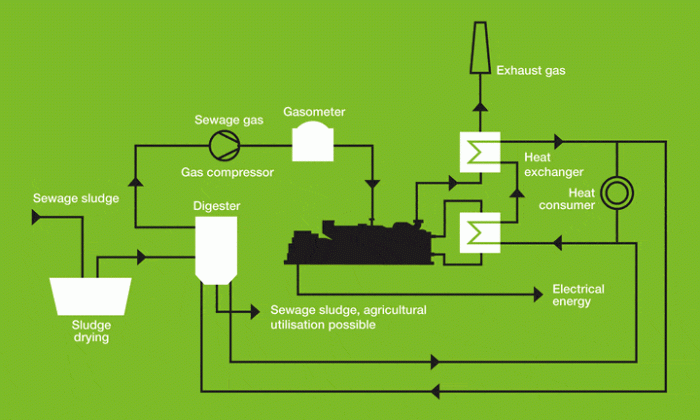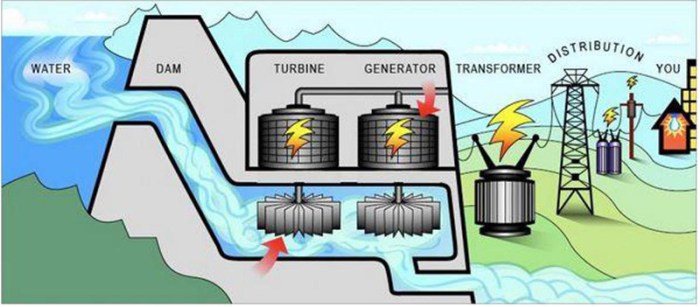The Teen’s Innovation
From a young age, Sarah was deeply passionate about environmental sustainability. Growing up in a coastal town, she witnessed firsthand the devastating effects of pollution on marine life and the fragile ecosystem. This sparked a desire in her to find innovative solutions to tackle environmental challenges. Inspired by her grandfather, a retired electrical engineer, Sarah began exploring the potential of harnessing renewable energy sources.
Driven by her curiosity and a strong sense of responsibility, Sarah embarked on a journey to develop a groundbreaking technology that could convert sewage into electricity. This project was born out of a deep understanding of the pressing need to reduce reliance on fossil fuels and find sustainable alternatives. Her research led her to the fascinating world of microbial fuel cells (MFCs), a technology that utilizes the natural processes of microorganisms to generate electricity from organic waste.
The Science Behind the Invention
Sarah’s invention is based on the principle of microbial fuel cells (MFCs), a revolutionary technology that leverages the power of microorganisms to convert organic waste into electricity. MFCs work by mimicking the natural process of respiration, where microorganisms break down organic matter in the absence of oxygen, releasing electrons as a byproduct.
Sarah’s innovative approach lies in the optimization of the MFC design and the selection of specific microorganisms that are highly efficient in breaking down sewage components. She meticulously engineered a system that consists of two chambers separated by a membrane. One chamber contains the sewage, while the other contains an electrode. Microorganisms in the sewage chamber break down organic matter, releasing electrons that travel through the membrane to the electrode, generating an electrical current.
The Transformation Process
The transformation process in Sarah’s invention involves several key steps:
- Sewage Collection and Pre-treatment: Sewage is collected from wastewater treatment plants or other sources and undergoes a preliminary treatment process to remove large solids and debris.
- Microbial Fuel Cell Chamber: The pre-treated sewage is then introduced into the MFC chamber, where it comes into contact with a specific type of bacteria known for their ability to break down organic matter efficiently.
- Electron Transfer: As the bacteria break down the organic matter in the sewage, they release electrons as a byproduct. These electrons travel through the membrane to the electrode in the second chamber.
- Electricity Generation: The flow of electrons from the bacteria to the electrode creates an electrical current, generating electricity.
- Wastewater Discharge: The treated wastewater, now devoid of most organic matter, is discharged back into the environment, minimizing pollution.
The Impact of the Innovation
Imagine a world where sewage, often seen as a waste product, becomes a source of clean and sustainable energy. This is the revolutionary potential of this teen’s innovation – transforming wastewater into electricity, offering a sustainable solution to our energy needs and addressing environmental concerns.
Environmental Benefits, Teen figured out way to transform sewage into electricity
This technology offers a multitude of environmental benefits, contributing to a cleaner and healthier planet.
- By utilizing sewage, a readily available waste resource, this invention reduces the reliance on fossil fuels, mitigating their harmful emissions and promoting a cleaner environment.
- Sewage treatment processes often release methane, a potent greenhouse gas. This innovation transforms methane into electricity, preventing its release into the atmosphere and contributing to a reduction in greenhouse gas emissions.
- The technology minimizes the environmental impact of sewage treatment plants, which can generate substantial amounts of wastewater and contribute to water pollution. This innovation reduces the volume of wastewater and minimizes its environmental impact.
Reducing Carbon Emissions
The potential for reducing carbon emissions through this innovation is significant. By replacing fossil fuels with a renewable energy source, this technology can significantly contribute to achieving carbon neutrality goals.
- This technology can power homes, businesses, and even entire communities, reducing the reliance on fossil fuels and their associated carbon emissions.
- By utilizing a readily available waste resource, this invention promotes a circular economy model, minimizing waste and reducing carbon emissions.
- This technology can be integrated into existing sewage treatment infrastructure, minimizing the need for new construction and its associated carbon footprint.
Cost-Effectiveness
The cost-effectiveness of this method compared to traditional energy sources is another key advantage.
- Sewage is a readily available and often underutilized resource. Utilizing it as an energy source eliminates the need to purchase fossil fuels, reducing energy costs significantly.
- This technology can be implemented at a relatively low cost, especially when integrated into existing sewage treatment infrastructure. This makes it a more affordable alternative to traditional energy sources.
- The potential for cost savings can be further enhanced by utilizing the electricity generated for various purposes within the sewage treatment plant itself, reducing operational costs.
Applications in Different Contexts
This innovative technology has the potential to be implemented in various contexts, addressing energy needs and environmental concerns in both urban and rural communities.
- In rural communities, this technology can provide a sustainable and affordable source of electricity, promoting development and improving quality of life.
- In urban areas, this technology can contribute to achieving sustainability goals by reducing reliance on fossil fuels and mitigating the environmental impact of sewage treatment.
- This technology can be implemented in industrial settings, providing a clean and sustainable source of energy for various operations.
Technological Challenges and Solutions
Scaling up the teen’s invention from a lab prototype to a full-scale, commercially viable system presents significant technological challenges. These challenges encompass technical limitations, infrastructure requirements, and the need for further research and development.
Technical Limitations and Obstacles
The teen’s invention, while promising, faces several technical limitations and obstacles that need to be addressed for widespread adoption.
- Efficiency and Energy Output: The current prototype might have limited efficiency in converting sewage into electricity. Optimizing the process to increase energy output while minimizing energy consumption is crucial for practical applications.
- Scale-up and Cost-Effectiveness: Scaling up the technology to treat large volumes of sewage at a municipal level presents challenges. The cost of materials, construction, and maintenance must be optimized to make the technology economically viable.
- Waste Handling and Byproduct Management: The process might generate byproducts that require proper handling and disposal. Ensuring environmental sustainability and compliance with regulations is essential.
- Integration with Existing Infrastructure: Integrating the technology with existing sewage treatment plants and power grids can be complex. Compatibility and interoperability need to be considered for seamless integration.
Solutions to Address Technological Challenges
Several potential solutions can be implemented to overcome the challenges mentioned above.
- Advanced Materials and Process Optimization: Utilizing advanced materials and optimizing the microbial fuel cell design can enhance efficiency and energy output. Research into new catalysts and electrode materials can significantly improve the performance of the system.
- Modular Design and Scalability: Adopting a modular design allows for scalability and flexibility. Smaller, standardized units can be easily combined to meet the needs of different locations and treatment capacities.
- Resource Recovery and Byproduct Utilization: Exploring opportunities for resource recovery and byproduct utilization can reduce waste and generate additional revenue streams. For example, biogas produced during the process can be used for energy generation or as fertilizer.
- Smart Monitoring and Control Systems: Implementing smart monitoring and control systems can optimize the process, minimize downtime, and ensure efficient operation. Real-time data analysis and remote control can enhance system performance.
Research and Development Plan
To further optimize the technology, a comprehensive research and development plan is essential.
- Performance Optimization: Conduct extensive laboratory testing to improve the efficiency and energy output of the microbial fuel cells. Explore different configurations, materials, and operating parameters to maximize power generation.
- Scale-up and Pilot Studies: Design and build pilot-scale systems to demonstrate the feasibility and effectiveness of the technology at a larger scale. Collect data on performance, cost, and environmental impact to inform future development.
- Byproduct Characterization and Utilization: Characterize the byproducts generated during the process and explore potential applications for resource recovery and value-added products.
- Integration with Existing Infrastructure: Conduct feasibility studies to evaluate the integration of the technology with existing sewage treatment plants and power grids. Develop protocols and guidelines for seamless integration.
Societal Implications: Teen Figured Out Way To Transform Sewage Into Electricity
The revolutionary teen-developed technology of transforming sewage into electricity holds immense potential to positively impact communities and address pressing environmental and energy concerns. However, this innovation also raises ethical considerations and questions about public acceptance. It is crucial to analyze these aspects to understand the full scope of this groundbreaking technology.
Ethical Considerations
Using sewage for energy generation presents ethical considerations that need careful examination. The primary concern is the potential for public perception and the perception of using waste products for energy production. Some people might find the idea of utilizing sewage for energy generation repulsive or unsanitary. This ethical dilemma requires open dialogue and transparent communication to address concerns and build public trust.
Public Acceptance and Adoption
The success of this innovation hinges on public acceptance and adoption. Public education and awareness campaigns can play a crucial role in dispelling misconceptions and promoting understanding of the benefits of this technology. Highlighting the environmental benefits, such as reducing greenhouse gas emissions and promoting resource recovery, can help sway public opinion. Furthermore, showcasing successful implementations in other communities can build confidence and encourage adoption.
Pros and Cons of Using Sewage for Energy Generation
| Pros | Cons |
|---|---|
| Reduces reliance on fossil fuels | Potential for odor and aesthetic issues |
| Generates clean and renewable energy | Requires significant investment in infrastructure |
| Reduces greenhouse gas emissions | Public perception and acceptance challenges |
| Promotes resource recovery and waste management | Potential for environmental contamination if not managed properly |
Teen figured out way to transform sewage into electricity – The teen’s invention is a testament to the power of innovation and the importance of thinking outside the box. This innovative approach to energy generation could lead to a future where our waste is no longer a burden but a valuable resource. As we move towards a more sustainable future, technologies like this offer a glimpse into a world where resourcefulness and ingenuity can pave the way for a cleaner and brighter tomorrow.
Imagine a world where we can power our homes with the stuff that goes down the drain! A teen just did that, turning sewage into electricity, which is pretty darn cool. But while this innovative teen is busy saving the planet, asus looks at 30m smartphone sales this year , proving that tech giants are still going strong. Who knows, maybe those smartphones will one day be powered by the very sewage we flush away! It’s a thought that could definitely power up our imaginations.
 Standi Techno News
Standi Techno News

